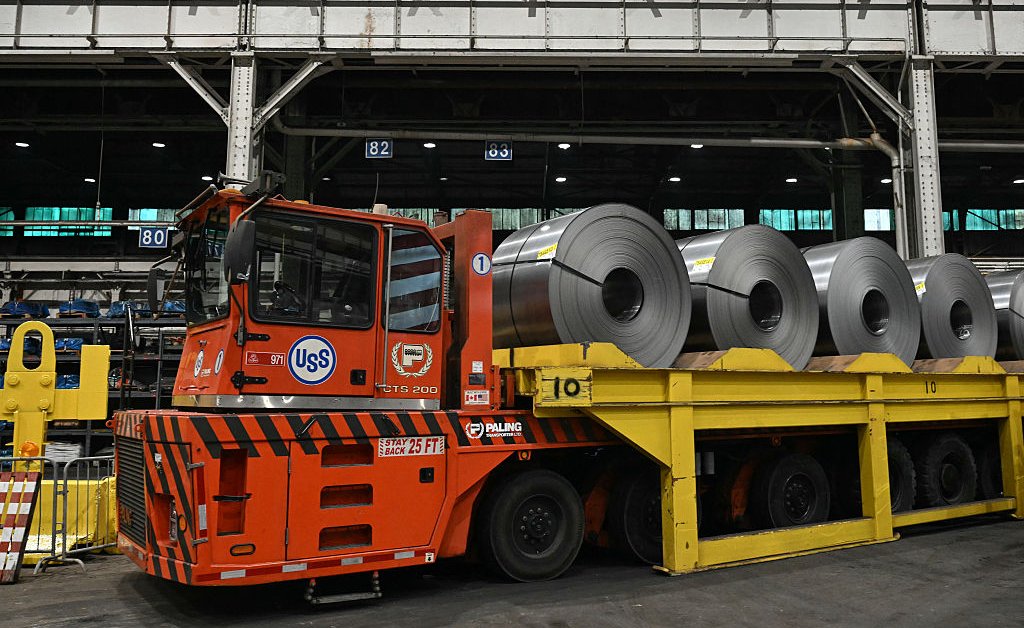Impacts of the Recent Steel and Aluminum Tariff Increase on the U.S. Economy
The cost of a wide array of goods-including canned foods, automobiles, residential buildings, and various other commodities-may soon escalate as a result of a significant tariff hike on steel and aluminum imports. The new tariff rate, which has doubled from 25% to 50%, is set to take effect starting Wednesday, signaling a major shift in trade policy.
Government Justification and Industry Reactions
President Donald Trump announced the increase, emphasizing that the move aims to “strengthen the domestic steel industry” amidst a rally at a steel mill in Pittsburgh, Pennsylvania-once a historic hub of American steel manufacturing. While domestic steel producers have welcomed the tariff hike, many economic analysts warn of potential adverse effects on the broader economy.
According to Virginia Tech economist David Beiri, consumers are likely to bear the brunt of these tariffs, as ongoing policy uncertainty hampers business planning and could lead to higher prices across the board.
Trade Dynamics and Domestic Industry Concerns
The United States remains heavily dependent on imported steel, sourcing more than 26 million metric tons last year alone. Major suppliers include Brazil, Canada, Mexico, South Korea, and China, with imports surpassing domestic production. Similarly, aluminum imports are vital to the U.S. economy, with the country relying heavily on foreign sources to meet demand.
Trade associations like the American Iron and Steel Institute have expressed support for the tariff increase, arguing it will curb the surge of foreign steel-particularly from China-that has flooded the market since 2020. Chinese steel exports have more than doubled, reaching 118 million metric tons in 2024, outpacing North American production and threatening local manufacturers.
However, experts warn that the U.S. steel industry may struggle to meet rising domestic demand due to limited capacity, leading to temporary shortages and increased prices. As Virginia Tech’s Beiri notes, the transition period will be critical as the industry adapts to new supply chain realities.
Jonathan Colehower of UST highlights that the domestic steel market could tighten further, pushing prices upward amid heightened demand. He emphasizes that there is little room for immediate compensation without a delay in supply adjustments.
The Aluminum Association advocates for tariff-free imports from Canada, emphasizing the importance of the U.S.-Canada aluminum trade. Aluminum is a crucial material for sectors ranging from automotive manufacturing to aerospace, and the association warns that without domestic capacity expansion, reliance on imports will persist for decades to come.
Cost Implications for Consumers and Industries
The increased tariffs are expected to raise prices across a broad spectrum of products. Items such as canned foods, beverages, and construction materials will likely see cost hikes, affecting both consumers and businesses. The Can Producers Institute, representing the metal can manufacturing industry, criticized the tariffs, warning they will inflate the cost of canned goods and benefit foreign competitors, especially from China.
Similarly, beverage companies, including breweries and soft drink manufacturers, anticipate higher production costs. The real estate and construction sectors, which heavily depend on steel for building infrastructure, are also poised to face increased expenses. Retailers like Lowe’s and Home Depot have expressed concerns, with the latter previously stating it would not raise prices despite the tariffs.
Transportation and agricultural equipment manufacturers, including those producing trucks, bicycles, and farm machinery, are also expected to see cost increases. Some companies may explore alternative strategies, such as shifting production or sourcing, to mitigate the impact. For example, Coca-Cola’s CEO has indicated plans to increase production of plastic bottles to offset rising aluminum costs.
Diplomatic negotiations continue, with trading partners voicing opposition to the tariffs. Canada’s Labour Congress has condemned the tariffs as an attack on Canadian workers, while the European Commission warned of increased economic uncertainty and higher costs for consumers and businesses across Europe and North America. Mexico has announced it will seek exemptions similar to those previously granted, as it is also affected by the new tariffs.
Looking Ahead: Market and Policy Uncertainties
The recent tariff increase marks a significant shift in U.S. trade policy, with ongoing negotiations and potential retaliations expected to shape future economic conditions. While some industries see the tariffs as a protective measure, many analysts warn that the broader economic landscape could suffer from reduced competitiveness and higher consumer prices.
As the global supply chain adjusts to these new tariffs, the coming months will be critical in determining whether the U.S. can bolster its domestic steel and aluminum industries without incurring excessive costs to its economy and consumers. The balance between protecting local jobs and maintaining affordable prices remains a central challenge for policymakers moving forward.

